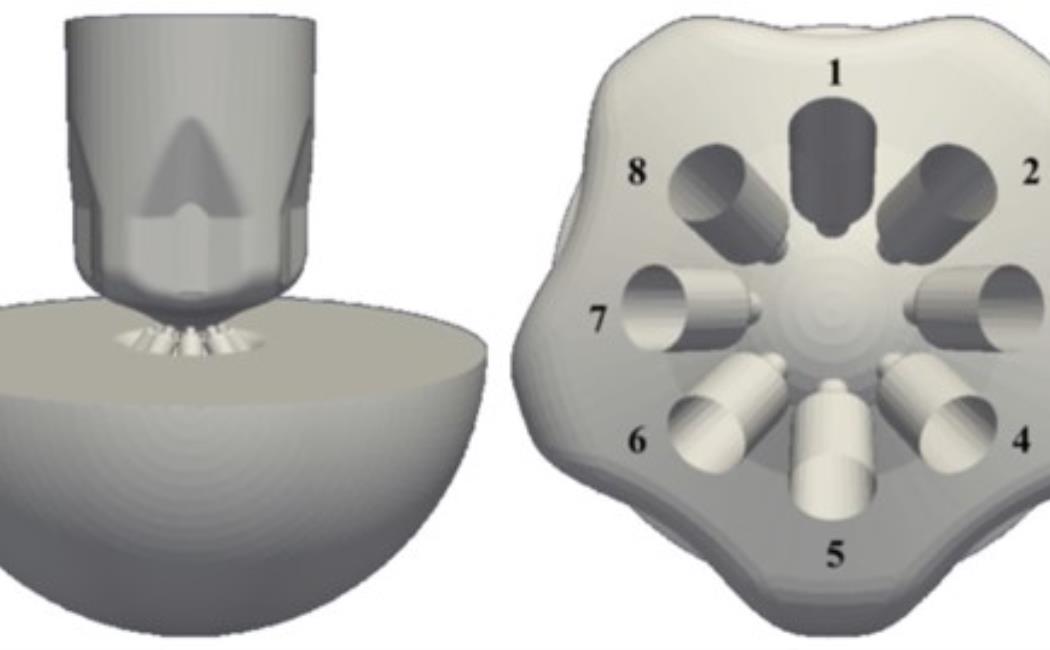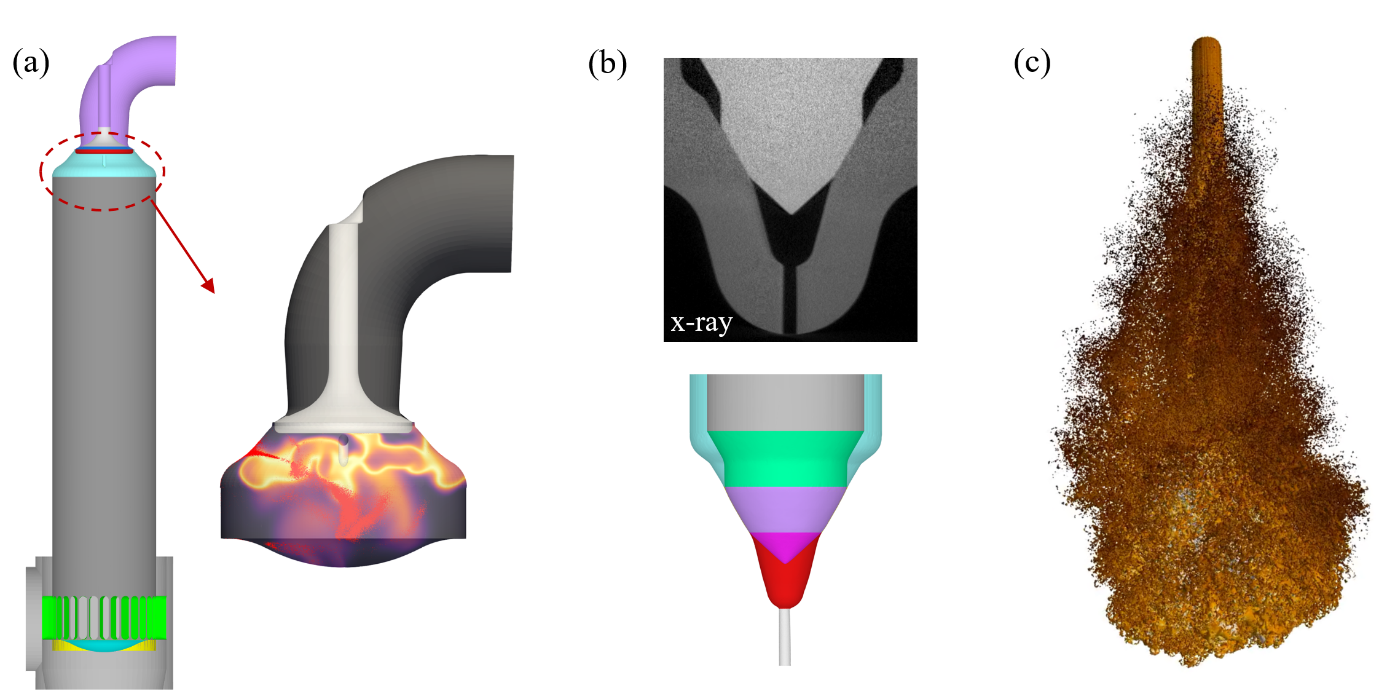
Prof. Hong G. Im, Dr. Xinlei Liu, Dr. Junjun Guo
Objective:
In internal combustion engines, high-pressure fuel injector nozzles are typically used to improve engine performance. Due to the abrupt change in pressure along the flow channel, cavitation is common, especially for large-bore marine engines. To take full advantage of the positive effects of cavitation while minimizing its negative effects, it is significant to obtain a more fundamental understanding of cavitation. Most of the previous simulations of cavitation are based on the Eulerian approach which requires a lot of computational resources. Most significantly, for large-bore marine engine simulations, a Lagrangian approach is typically employed to predict the spray dynamics. Therefore, the objective of this project is to develop a robust spray model that is able to reproduce the cavitation phenomenon under a Lagrangian scheme.
Methodology:
The project will proceed through two parts. First, the cavitation phenomenon will be studied based on Eulerian approach. The effects of various nozzle design parameters and injection conditions on cavitation behaviors will be extensively investigated. Significant information about the spray will be extracted and evaluated. Second, based on the spray data provided by the Eulerian model, a correlation model will be developed, which is then applied to modify and improve the Lagrangian spray model.
Expected Outcome and Results:

Figure. (a) predicted spray-combustion process in a two-stroke marine engine, (b) x-ray-measured and modeling-use internal nozzle geometries, and (c) high-resolution-predicted spray development using the VOF method.